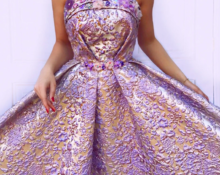In ancient photographs and paintings we see cute children in dresses. Little angels in lace, as if only girls were born. But that's not true! There was such a strange fashion: dressing boys in dresses. How did this happen?

Practicality comes first
Clothing was expensive, so in the period from the 16th to the 19th centuries, the glorious tradition of dressing all children in long shirts or tunics was maintained. Sewing a simple floor-length shirt is much easier than cutting out full-length pants, and then teaching your child the tricks of lacing. As the garment grew, it was hemmed with scraps of fabric or lace, thereby increasing the service life of the children's wardrobe in this simple way.
Plus, I would like to remind you that at that time there were no washing machines, which means things were washed by hand, and the child is not known for strict hygiene, which is quite natural. The nobility solemnly transferred this responsibility to the servants, but no one likes extra work, so the tradition of dressing boys in dresses took root.For people with good incomes, boys' clothes were made from good fabrics, decorated with thin lace and metal buttons. The peasants dressed the child in long linen shirts.

By the way, despite the widespread assurances that the fashion for boys' dresses was only in the Middle Ages, let me remind you about the Slavs. Our distant ancestors, for the same reasons of hygiene and economy, dressed all small children in shirts from altered clothes of their parents.
The first trousers were considered a symbol of involvement in adult male life
In the period from 6 to 8 years old, the child already dreams of trousers, so he tries to behave like an adult. A great incentive to maintain discipline! Some families even held a small celebration in honor of their son’s “coming of age.” Perhaps these are echoes of an ancient ritual of initiation into men. Until the solemn moment, the child was considered a sexless person. Sigmund Freud put an end to the delusion. He was the first to talk about gender from birth, and not from some abstract point of reference. After the First World War, boys were left with only baptismal dresses, and intrusive advertising firmly depicted the image of a small man in pants, preferably blue.

If the child could not withstand the tests of adult life and began to misbehave, then strict parents used reverse dressing as an effective punishment, temporarily depriving them of trousers. As you understand, the coveted pants rose in price and kept the naughty child from mischief.
This is where the expression “under mother’s skirt” came to us. It was believed that while the baby was under the care of his mother and other women, he could walk around in a shirt.When men (mentors, father, grandfather, older brothers) begin to raise him, it is not appropriate for the child to wear women’s clothes.
In France, in the mid-19th century, a tradition arose of tying a pink ribbon at birth for girls and a blue ribbon for boys. In the 20th century, due to globalization in the 50s, the whole world began to choose these tones for wardrobes and decoration of children's rooms. Now we see how the gender stereotype is becoming obsolete, young mothers are trying to stand out with originality and choose other colors. Well, fashion and opinions are fickle!
How to find the girl in the picture
If you look closely with a trained eye, the differences are noticeable. For boys, dresses corresponded to the following parameters:
- Bright and dark colors were used.
- Dense and strong fabrics, such as brocade, were used for tailoring.
- Luxurious lace and metal buttons were often sewn on, although closer to the 19th century the splendor began to wane, replaced by formal collars and cuffs.
- The fasteners were located at the front.
- A tightly closed collar without a neckline, it was still left for the girls.

Future women always had a parting in the middle and beautiful hairstyles for long hair. While boys had their hair cut shorter, most often to shoulder length, and parted in the middle. Fashions for colors changed frequently, and the red hue has long been considered to be filled with masculine power, so don’t be surprised when you see a boy in a red dress with rich lace in an old painting.
There is another theory regarding the question of why boys used to be dressed in dresses. Let's mentally immerse ourselves in that era. It was a time of bloody wars and constant skirmishes.Russia was expanding towards Siberia, and the map of Europe was constantly being redrawn due to the ambitions of the kings. Mothers understood that they were giving birth to future soldiers and tried to delay the moment of growing up, enjoying childhood purity and innocence, which so strongly resembles angelic becoming...
Nothing happens for nothing! Dresses for a baby are more practical from all sides, and a rite of passage into a man gives trousers a mystical halo in the eyes of a child eager to follow the example of his father. Nowadays, only the British royal family pays tribute to traditions.


 2
2





